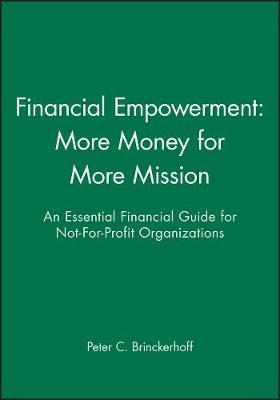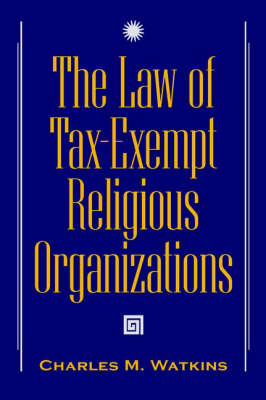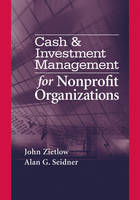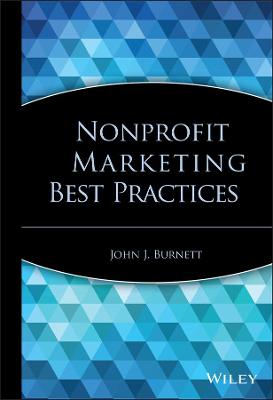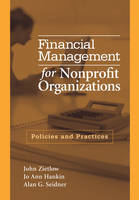Law of Intermediate Sanctions
 -15%
portes grátis
-15%
portes grátis
Law of Intermediate Sanctions
A Guide for Nonprofits
Hopkins, Bruce R.
John Wiley and Sons Ltd
01/2003
362
Dura
Inglês
9780471224020
0471224022
15 a 20 dias
752
This book summarizes, analyzes, and explains the federal tax law on intermediate sanctions he most important development in statutory law affecting nonprofit organizations in over 30 years.
Preface. Prologue. Chapter 1: Basics and History of Intermediate Sanctions Law. 1.1 Intermediate Sanctions Law Basics. (a) Meaning of Intermediate Sanctions. (b) Nature of the Sanctions. (c) Fundamental Terminology. 1.2 History of Intermediate Sanctions. (a) General History. (b) Accompanying Regulations. (c) Effective Dates. 1.3 Applicable Tax-Exempt Organizations. 1.4 Interrelationship with Other Law. 1.5 Commentary on Intermediate Sanctions. Chapter 2: Private Inurement and Private Benefit Doctrines. 2.1 Essence of Private Inurement. 2.2 Concept of Net Earnings. 2.3 Requisite Insider. 2.4 Types of Private Inurement. (a) Compensation for Services. (b) Rental Arrangements. (c) Loans. (d) Sales of Assets. (e) Equity Distributions. (f ) Assumptions of Liability. (g) Employee Benefits. (h) Tax Avoidance Schemes. (i) Services Rendered. (j ) Provision of Goods or Refreshments. (k) Retained Interests. (l) Embezzlements. 2.5 Social Welfare Organizations. 2.6 Per Se Private Inurement. 2.7 Incidental Private Inurement. 2.8 Private Benefit Doctrine. (a) General Rules. (b) Import of Joint Venture Cases. (c) Perspective. (d) Private Benefit: In the Background as Well as the Foreground. Chapter 3: Disqualified Persons. 3.1 Concept of Disqualified Person. 3.2 Directors and Trustees. 3.3 Officers. 3.4 Key Employees. 3.5 Facts and Circumstances Test. (a) Facts and Circumstances Showing Influence. (b) Facts and Circumstances Showing Little Influence. 3.6 Family Members. 3.7 Controlled Entities. 3.8 Vendors of Products or Services. 3.9 Nondisqualified Persons. 3.10 Donor-Advised Funds. 3.11 Other Rules. Chapter 4: Excess Benefit Transactions. 4.1 Concept of Excess Benefit Transaction. (a) Excess Benefit Transaction Defined. (b) Consideration. (c) Indirect Excess Benefit Transactions. (d) Element of Knowledge. 4.2 Controlled Entities. 4.3 Intermediaries. 4.4 Initial Contract Exception. (a) History of Exception. (b) Fixed Payments. (c) Initial Contracts. (d) New Contracts. 4.5 Valuation Standards. (a) Valuation of Property. (b) Valuation of Services. 4.6 Compensation Arrangements. (a) Meaning of Compensation. (b) Ascertaining the Reasonableness of Compensation. (c) Timing of Reasonableness of Compensation. (d) Intent to Treat Benefit as Compensation. 4.7 Other Transactions. (a) Lending Transactions. (b) Rental Transactions. (c) Sales transactions. 4.8 For the Use of Transactions. 4.9 Revenue-Sharing Transactions. (a) Definition of Revenue-Sharing Transaction. (b) Overview of Legislative History. (c) Profit-Sharing Plans. (d) Percentage-Based Compensation. (e) Proposed Regulations. (f ) Revenue-Sharing in the Fundraising Context. 4.10 Disregarded Economic Benefits. Chapter 5: Rebuttable Presumption of Reasonableness. 5.1 Concept of Rebuttable Presumption. (a) Presumptions Generally. (b) Intermediate Sanctions Rebuttable Presumption. 5.2 Authorized Bodies. 5.3 Conflicts of Interest. 5.4 Appropriate Data. (a) Knowledge and Expertise of Members. (b) Relevant Information. (c) Special Rules for Small Organizations. 5.5 Documentation. (a) General Rules. (b) Rules as to Fixed and Nonfixed Payments. (c) Absence of Inference. 5.6 Rebutting the Presumption. 5.7 Impact of Presumption. Chapter 6: Applicability of Intermediate Sanctions. 6.1 Excess Benefit. 6.2 Initial Tax. 6.3 Additional Tax. (a) General Rules. (b) Taxable Period. 6.4 Correction. (a) Concept of Correction. (b) Forms of Correction. (c) Correction Amount. 6.5 Tax on Organization Managers. (a) Definition of Organization Manager. (b) Certain Committee Members. (c) General Rules. (d) Definition of Participation. (e) Definition of Knowing. (f ) Reliance on Professional Advice. (g) Definition of Willful. (h) Definition of Occurrence. 6.6 Abatement. (a) Initial Tax. (b) Additional Tax. 6.7 Period of Limitations. 6.8 Revocation of Tax Exemption. (a) General Rules. (b) Private Inurement and Intermediate Sanctions. (c) Commentary. 6.9 Reporting Requirements. 6.10 Deductibility of Taxes and Correction Amounts. 6.11 Reimbursements and Insurance. Epilogue. Appendix A: Intermediate Sanctions Rules Executive Summary. Appendix B: Intermediate Sanctions Law. Appendix C: Intermediate Sanctions Legislative History. Appendix D: History of Intermediate Sanctions. Appendix E: Frequently Asked Questions About the Intermediate Sanctions Rules. Appendix F: An Introduction to I.R.C. 4958 (Prepared by the IRS). Appendix G: IRS Summary of Fringe Benefits. Appendix H: Planning for Compliance. Appendix I: Afterthoughts. Table of Cases. Table of IRS Revenue Rulings and Procedures. Table of IRS Private Rulings. Glossary. Selected Bibliography. Index.
Este título pertence ao(s) assunto(s) indicados(s). Para ver outros títulos clique no assunto desejado.
This book summarizes, analyzes, and explains the federal tax law on intermediate sanctions he most important development in statutory law affecting nonprofit organizations in over 30 years.
Preface. Prologue. Chapter 1: Basics and History of Intermediate Sanctions Law. 1.1 Intermediate Sanctions Law Basics. (a) Meaning of Intermediate Sanctions. (b) Nature of the Sanctions. (c) Fundamental Terminology. 1.2 History of Intermediate Sanctions. (a) General History. (b) Accompanying Regulations. (c) Effective Dates. 1.3 Applicable Tax-Exempt Organizations. 1.4 Interrelationship with Other Law. 1.5 Commentary on Intermediate Sanctions. Chapter 2: Private Inurement and Private Benefit Doctrines. 2.1 Essence of Private Inurement. 2.2 Concept of Net Earnings. 2.3 Requisite Insider. 2.4 Types of Private Inurement. (a) Compensation for Services. (b) Rental Arrangements. (c) Loans. (d) Sales of Assets. (e) Equity Distributions. (f ) Assumptions of Liability. (g) Employee Benefits. (h) Tax Avoidance Schemes. (i) Services Rendered. (j ) Provision of Goods or Refreshments. (k) Retained Interests. (l) Embezzlements. 2.5 Social Welfare Organizations. 2.6 Per Se Private Inurement. 2.7 Incidental Private Inurement. 2.8 Private Benefit Doctrine. (a) General Rules. (b) Import of Joint Venture Cases. (c) Perspective. (d) Private Benefit: In the Background as Well as the Foreground. Chapter 3: Disqualified Persons. 3.1 Concept of Disqualified Person. 3.2 Directors and Trustees. 3.3 Officers. 3.4 Key Employees. 3.5 Facts and Circumstances Test. (a) Facts and Circumstances Showing Influence. (b) Facts and Circumstances Showing Little Influence. 3.6 Family Members. 3.7 Controlled Entities. 3.8 Vendors of Products or Services. 3.9 Nondisqualified Persons. 3.10 Donor-Advised Funds. 3.11 Other Rules. Chapter 4: Excess Benefit Transactions. 4.1 Concept of Excess Benefit Transaction. (a) Excess Benefit Transaction Defined. (b) Consideration. (c) Indirect Excess Benefit Transactions. (d) Element of Knowledge. 4.2 Controlled Entities. 4.3 Intermediaries. 4.4 Initial Contract Exception. (a) History of Exception. (b) Fixed Payments. (c) Initial Contracts. (d) New Contracts. 4.5 Valuation Standards. (a) Valuation of Property. (b) Valuation of Services. 4.6 Compensation Arrangements. (a) Meaning of Compensation. (b) Ascertaining the Reasonableness of Compensation. (c) Timing of Reasonableness of Compensation. (d) Intent to Treat Benefit as Compensation. 4.7 Other Transactions. (a) Lending Transactions. (b) Rental Transactions. (c) Sales transactions. 4.8 For the Use of Transactions. 4.9 Revenue-Sharing Transactions. (a) Definition of Revenue-Sharing Transaction. (b) Overview of Legislative History. (c) Profit-Sharing Plans. (d) Percentage-Based Compensation. (e) Proposed Regulations. (f ) Revenue-Sharing in the Fundraising Context. 4.10 Disregarded Economic Benefits. Chapter 5: Rebuttable Presumption of Reasonableness. 5.1 Concept of Rebuttable Presumption. (a) Presumptions Generally. (b) Intermediate Sanctions Rebuttable Presumption. 5.2 Authorized Bodies. 5.3 Conflicts of Interest. 5.4 Appropriate Data. (a) Knowledge and Expertise of Members. (b) Relevant Information. (c) Special Rules for Small Organizations. 5.5 Documentation. (a) General Rules. (b) Rules as to Fixed and Nonfixed Payments. (c) Absence of Inference. 5.6 Rebutting the Presumption. 5.7 Impact of Presumption. Chapter 6: Applicability of Intermediate Sanctions. 6.1 Excess Benefit. 6.2 Initial Tax. 6.3 Additional Tax. (a) General Rules. (b) Taxable Period. 6.4 Correction. (a) Concept of Correction. (b) Forms of Correction. (c) Correction Amount. 6.5 Tax on Organization Managers. (a) Definition of Organization Manager. (b) Certain Committee Members. (c) General Rules. (d) Definition of Participation. (e) Definition of Knowing. (f ) Reliance on Professional Advice. (g) Definition of Willful. (h) Definition of Occurrence. 6.6 Abatement. (a) Initial Tax. (b) Additional Tax. 6.7 Period of Limitations. 6.8 Revocation of Tax Exemption. (a) General Rules. (b) Private Inurement and Intermediate Sanctions. (c) Commentary. 6.9 Reporting Requirements. 6.10 Deductibility of Taxes and Correction Amounts. 6.11 Reimbursements and Insurance. Epilogue. Appendix A: Intermediate Sanctions Rules Executive Summary. Appendix B: Intermediate Sanctions Law. Appendix C: Intermediate Sanctions Legislative History. Appendix D: History of Intermediate Sanctions. Appendix E: Frequently Asked Questions About the Intermediate Sanctions Rules. Appendix F: An Introduction to I.R.C. 4958 (Prepared by the IRS). Appendix G: IRS Summary of Fringe Benefits. Appendix H: Planning for Compliance. Appendix I: Afterthoughts. Table of Cases. Table of IRS Revenue Rulings and Procedures. Table of IRS Private Rulings. Glossary. Selected Bibliography. Index.
Este título pertence ao(s) assunto(s) indicados(s). Para ver outros títulos clique no assunto desejado.


